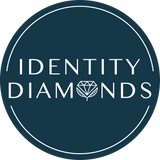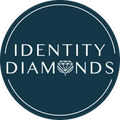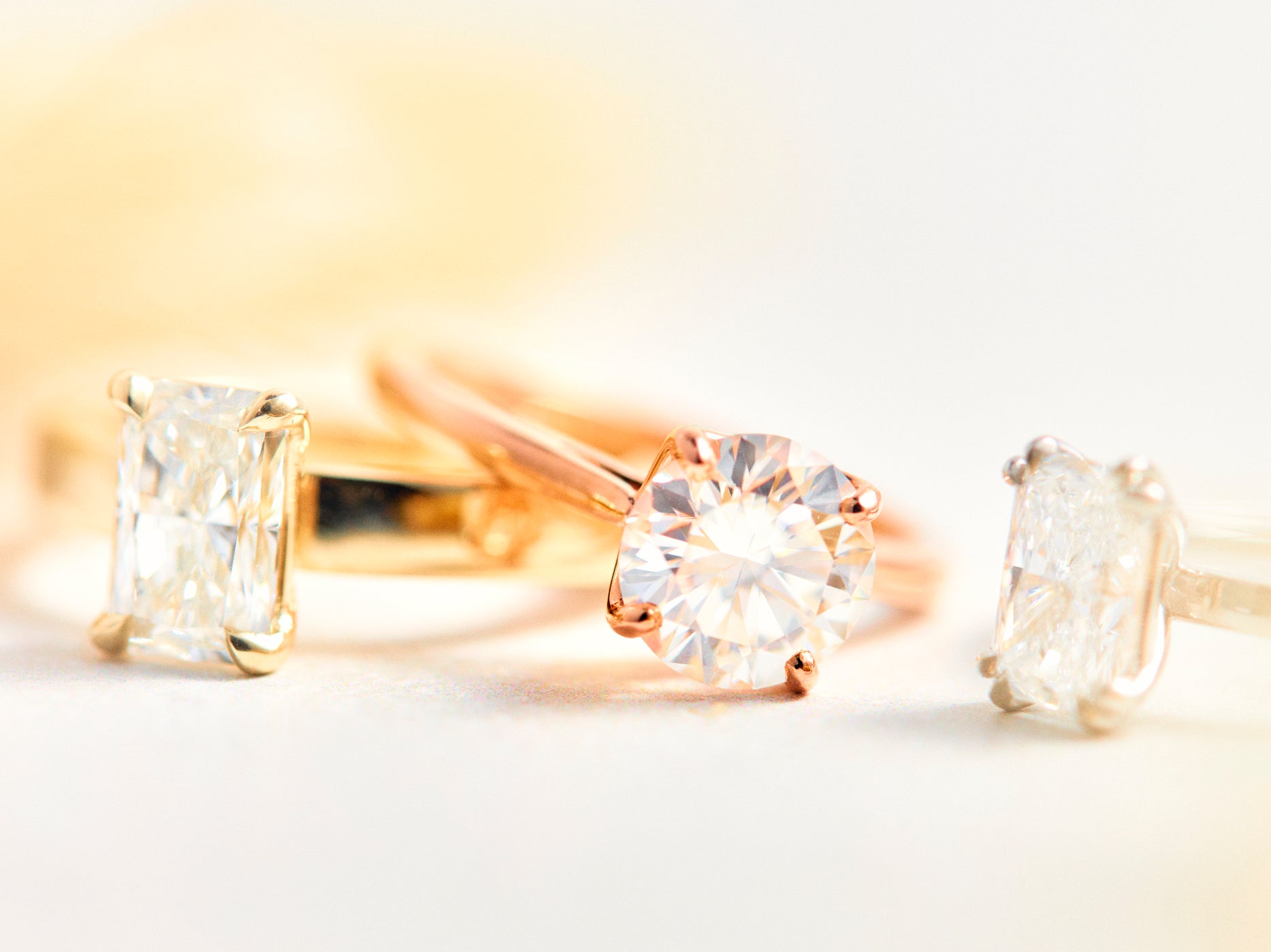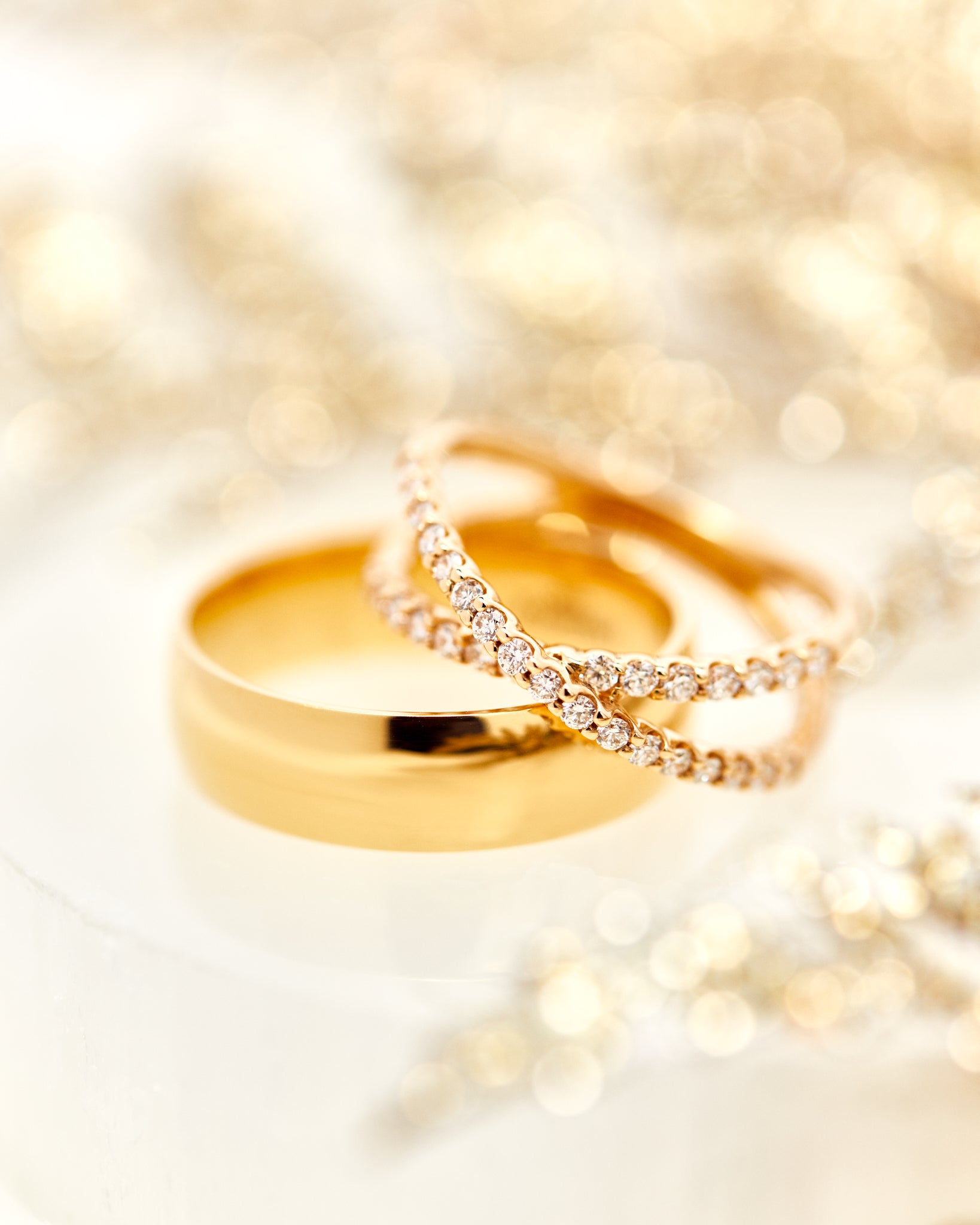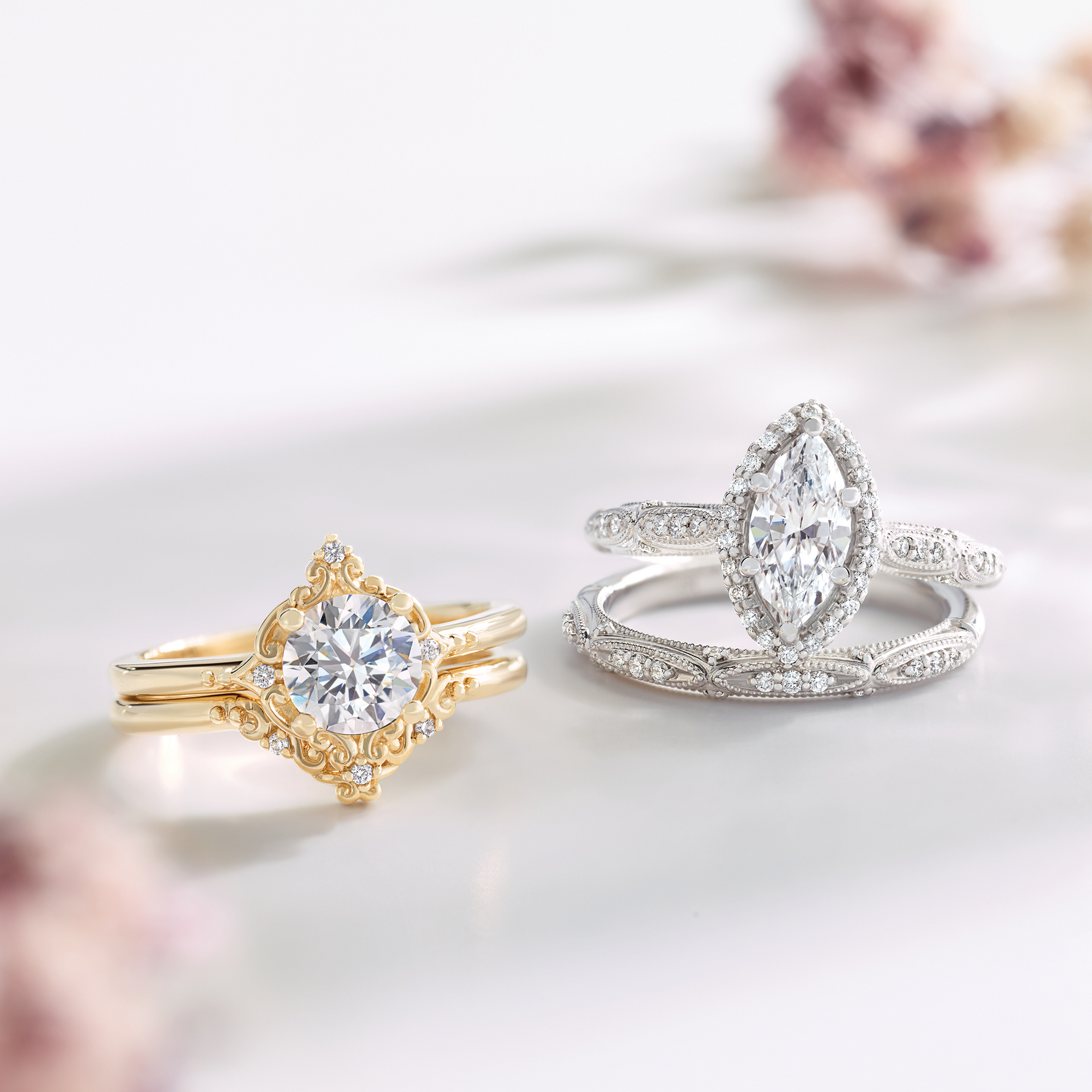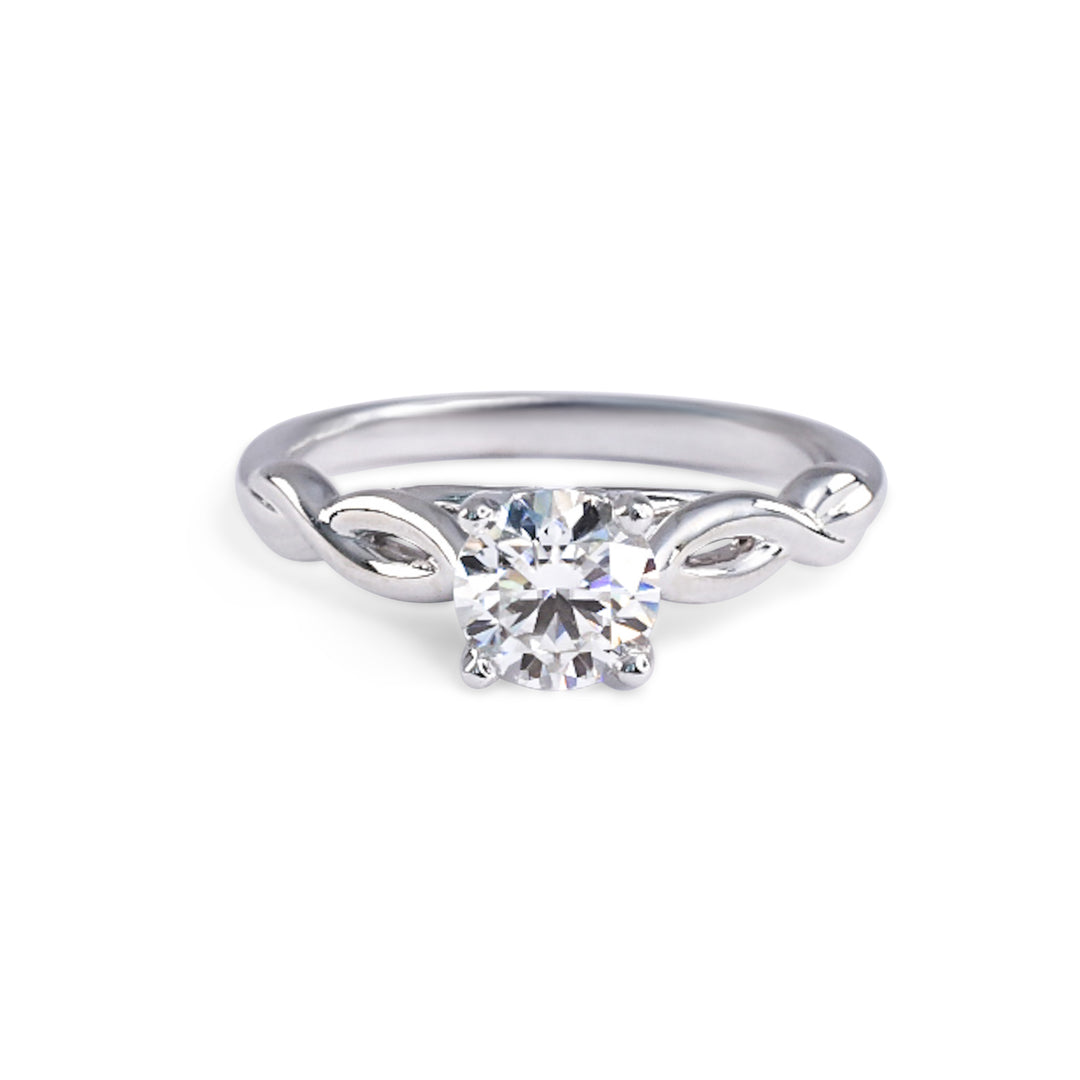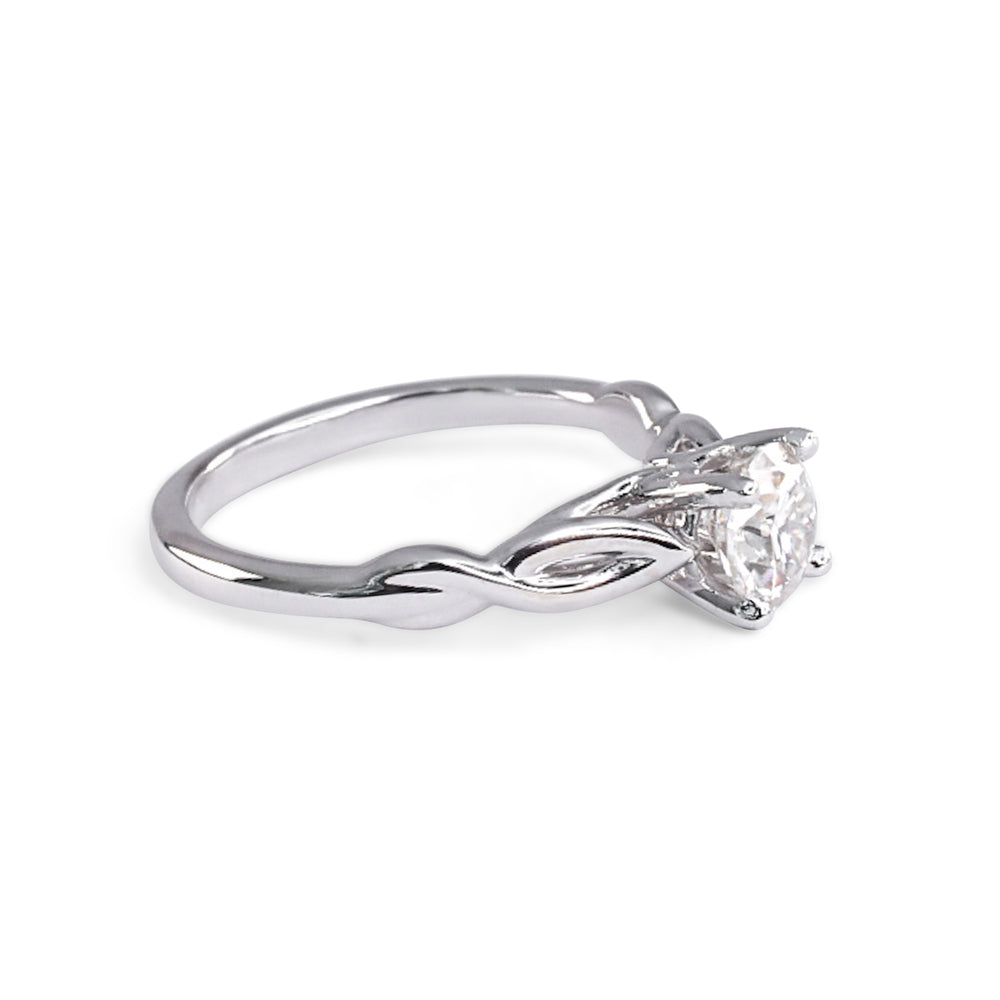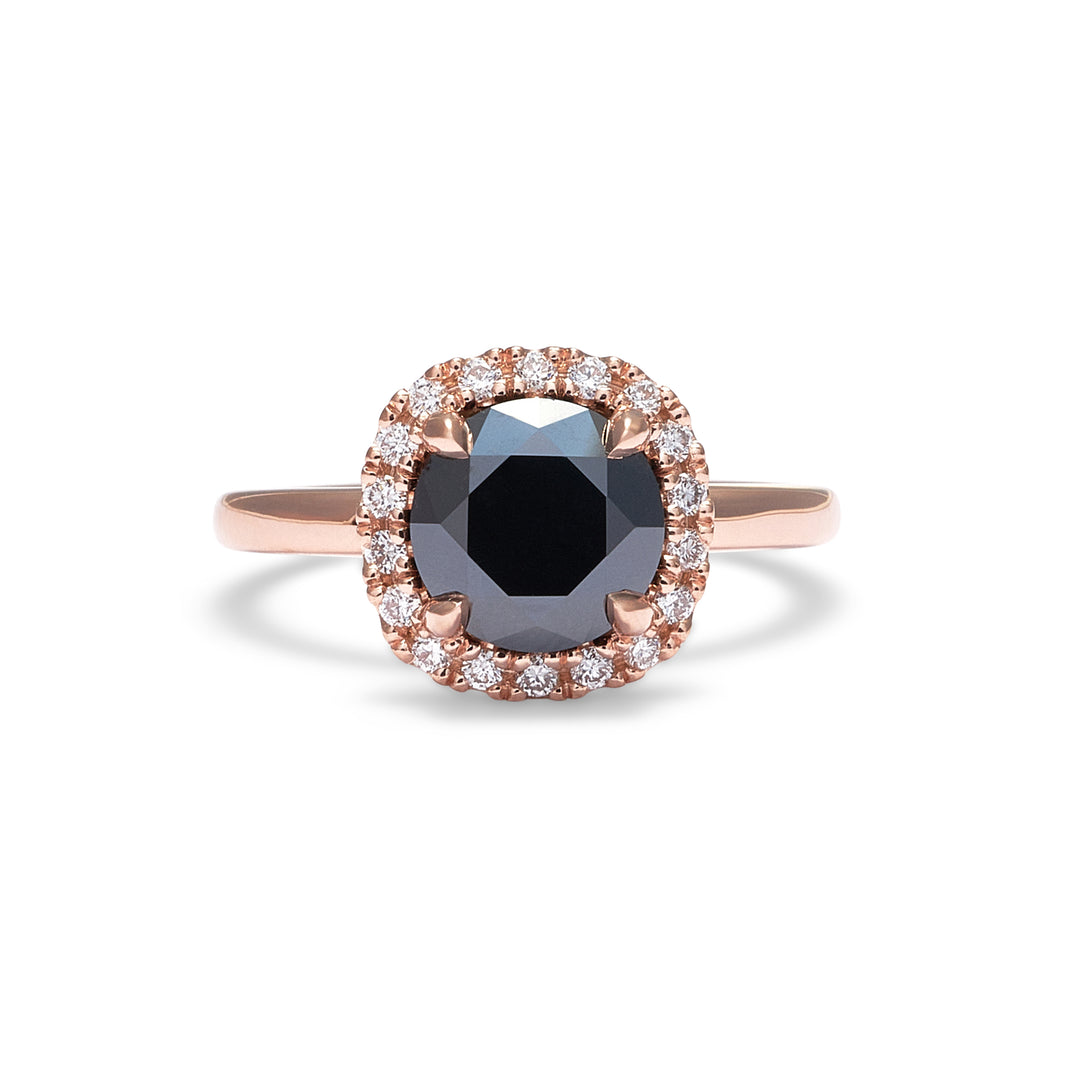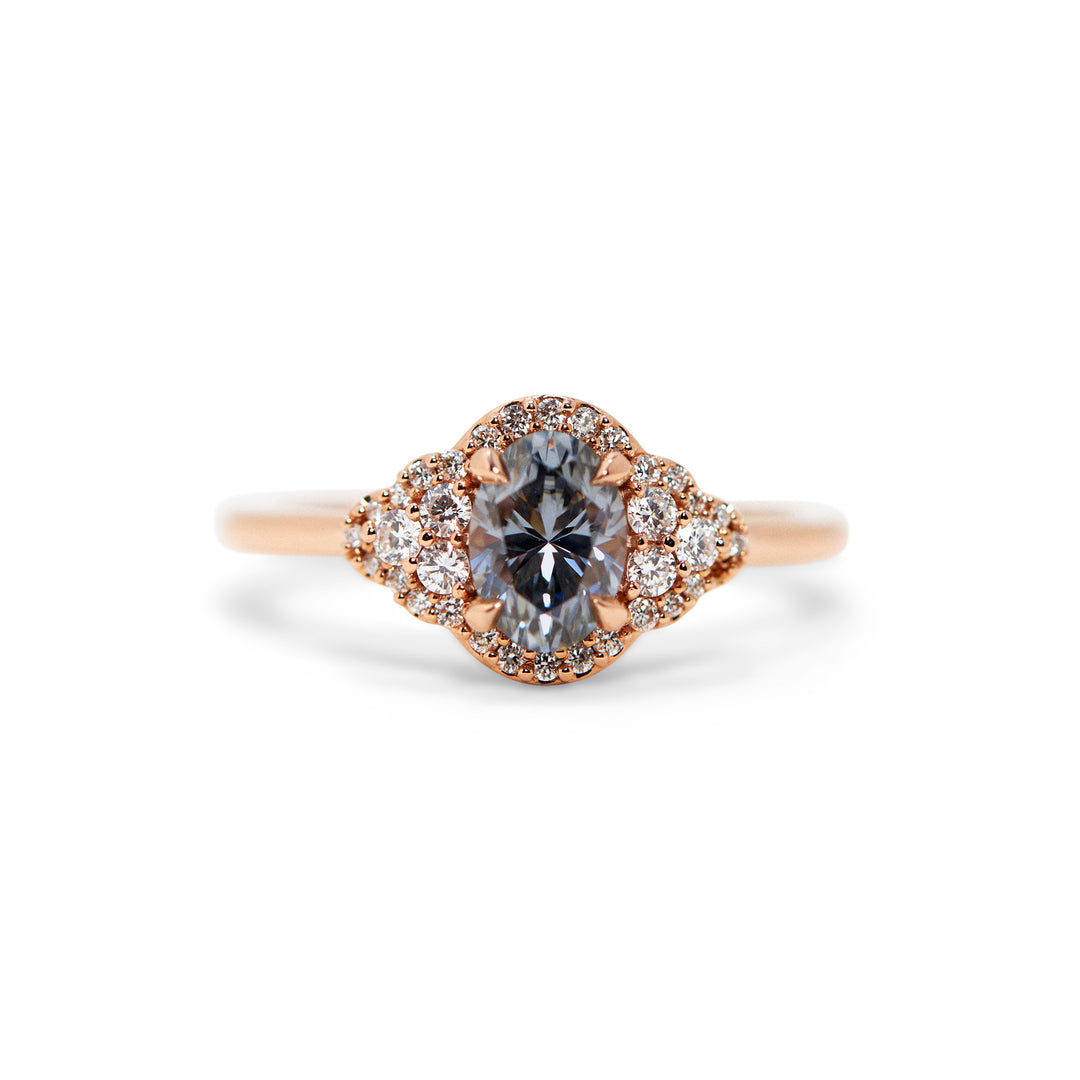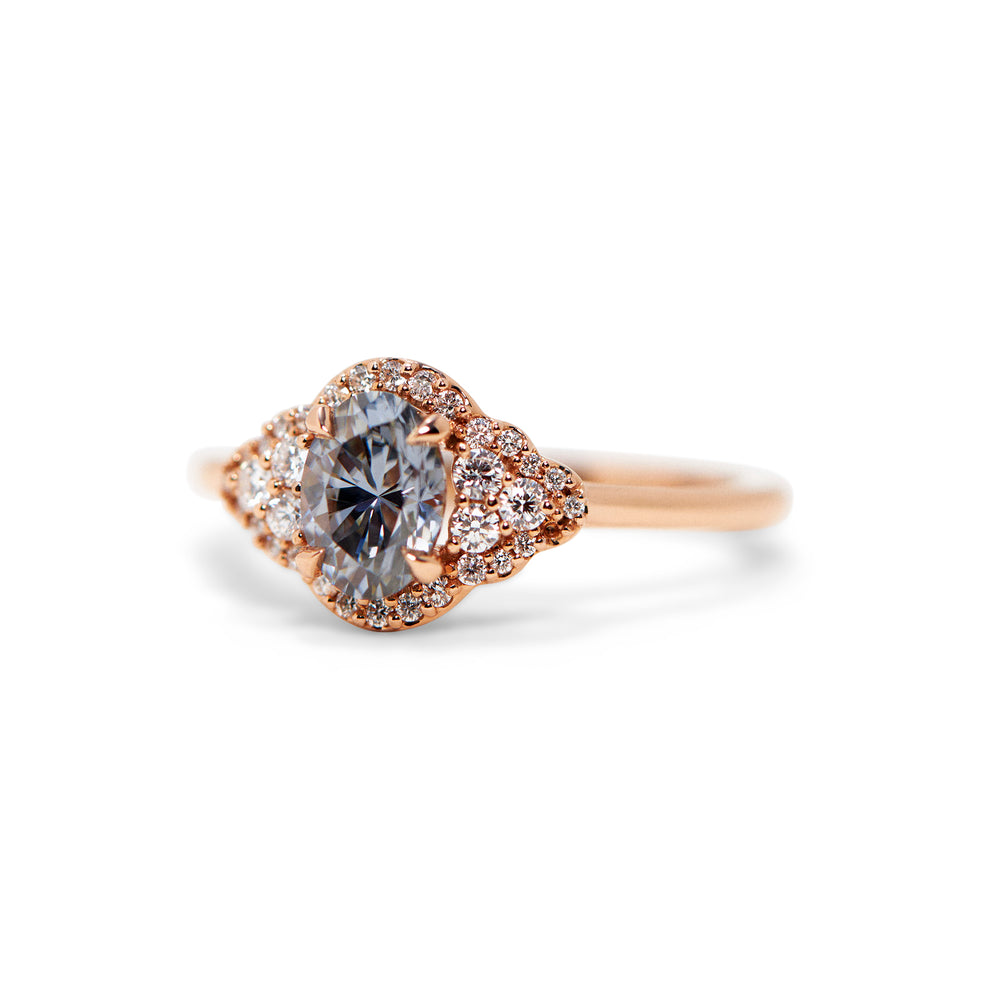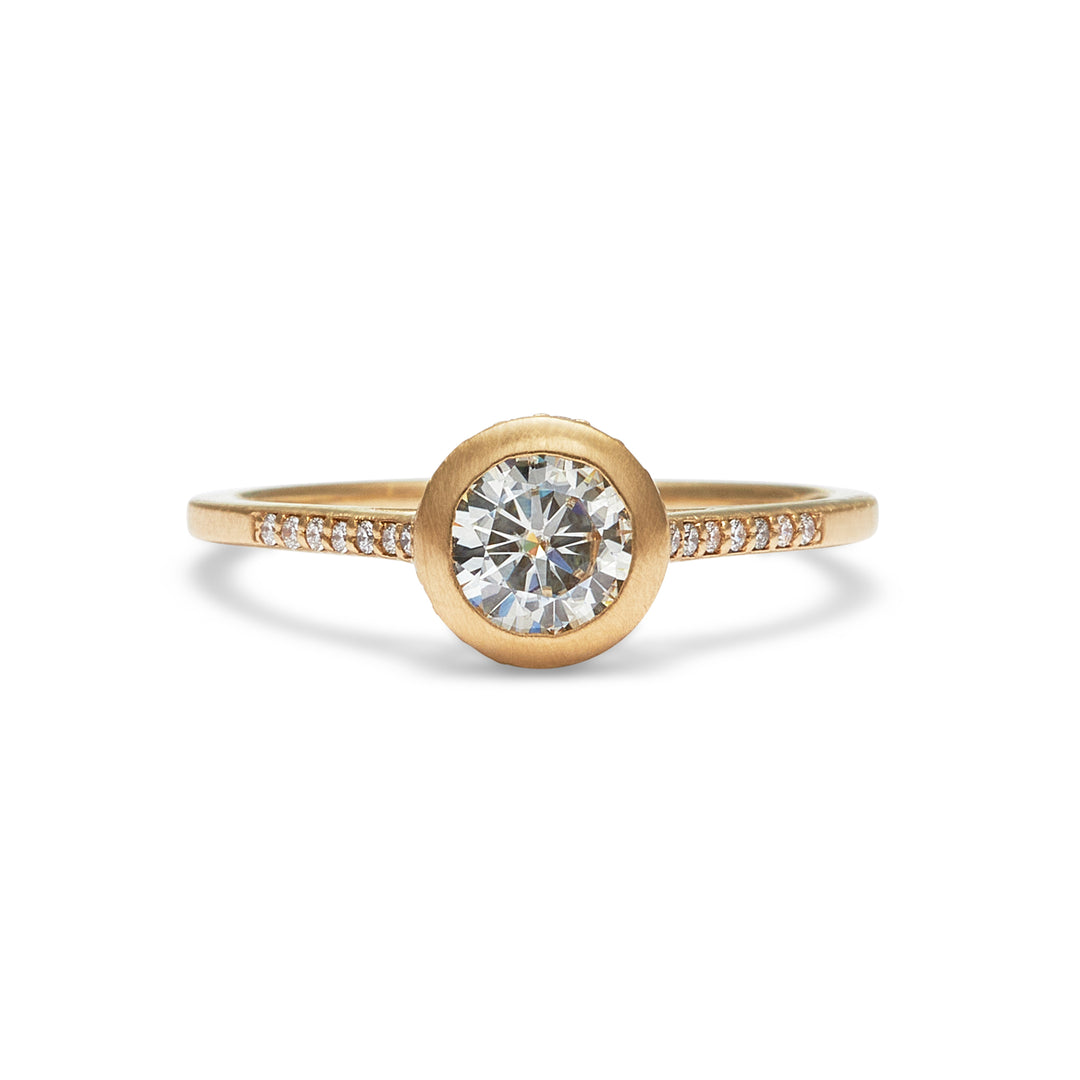Discover the Beauty of Moissanite
If you have been shopping around for an ethical engagement ring option, you might have heard of moissanite. Although moissanite has been available for decades now, not many jewelers choose to offer it, and the information about that wonderful gem is somewhat scarce and unclear. Let's clear up the confusion and expose this brilliant gem for the wonderful diamond alternative that it is!
MOISSA-WHAT?
Moissanite is a gemstone made of silicon carbide known for its brilliance, durability, and affordability.
Its physical properties are very well suited for everyday wear (think engagement ring!), and its lower price makes it a great option for someone seeking a large look and an affordable option.
It is also a great gem for individuals and couples looking for an alternative to diamond while maintaining a classic aesthetic.
Moissanite is a stunning, frugal, ethical, and durable gemstone, and makes for a perfect engagement ring center stone option!
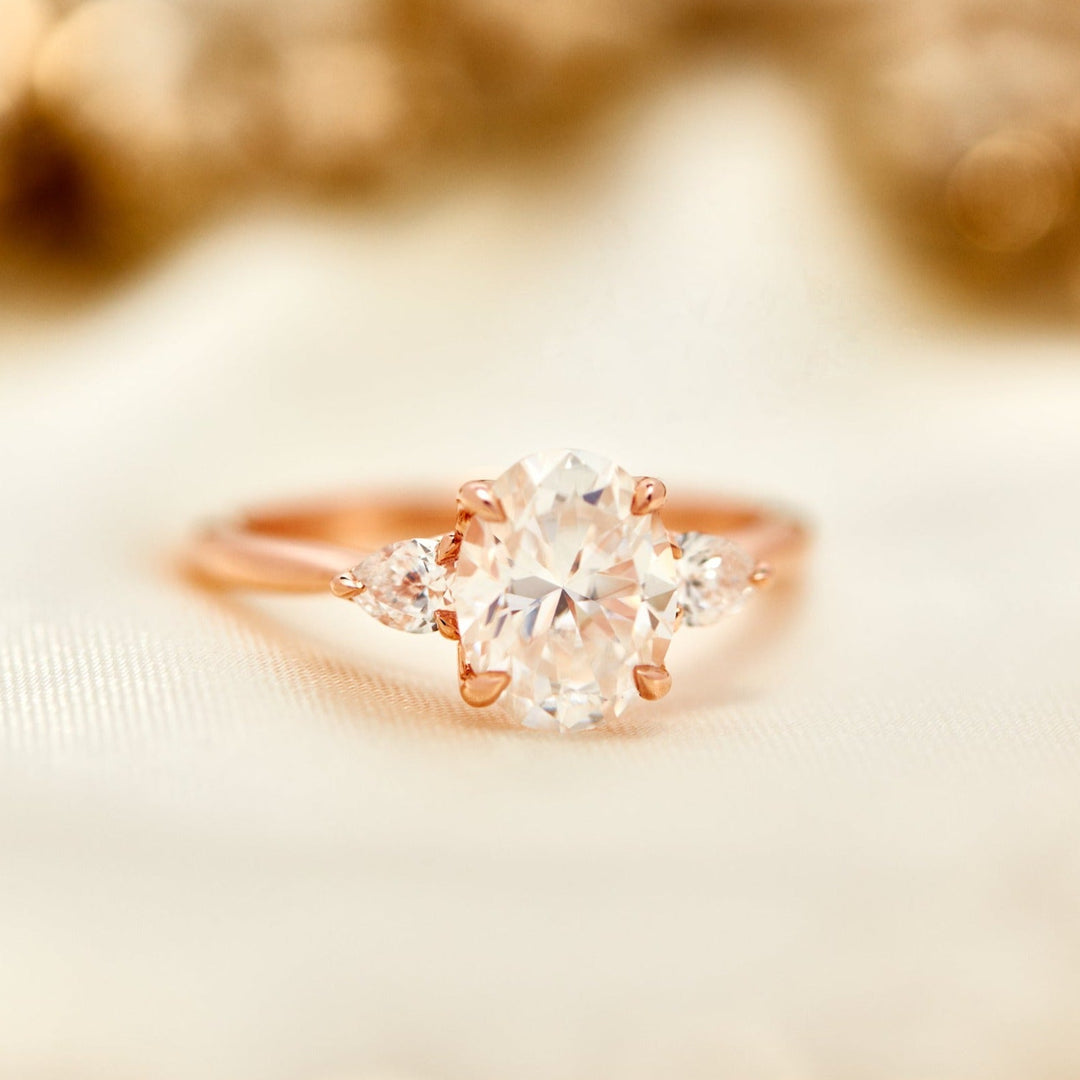
Just like your taste for gold color or diamond shape, your taste for moissanite is a matter of personal preference. Seeing it in person is the best and most certain way to find out whether moissanite is right for you.
Contact us today to schedule a viewing, visit us in store, or submit a custom design inquiry!
More about moissanite
Yes! Contrary to the popular belief, moissanite is a gemstone all of its own. It is not a "fake diamond", a diamond imitation, nor a "man-made diamond". It's a gemstone in its own right, just like rubies and sapphires and emeralds are their own gemstones. The thing is: moissanite simply happens to look very similar to diamonds, making it the perfect alternative to the traditional diamond center stone!
Moissanite was discovered over a century ago by a French chemist named Henri Moissan (hence the name "moissanite"), while he was examining rock samples from a meteor crater. You read that right, moissanite comes space! How cool is that?!
Moissanite naturally occurs in nature, but it is very scarce. Because it is virtually impossible to source reliably in its naturally occurring state, growing moissanite in a laboratory environment is the best way to guarantee a consistent supply of top quality, sizable gems.
Not anymore! The moissanite we know and love today is a far superior product than what it was back when it was initially commercialized. Charles & Colvard was the first company to introduce lab grown moissanite to the jewelry market. The original moissanite did have a greenish to grayish color, that made it somewhat unappealing, and gave moissanite a bit of a bad rep.
But rest assured! The process has now been perfected, and since 2015, it is now possible to grow completely colorless moissanite. Gone are the days of shady (pun intended) moissanite.
The sparkle of a moissanite is unrivaled!
Moissanite has 2.4 times the fire of a diamond. "Fire" refers to the flashes of color you see when a gem is gently moved under a light. To some, this rainbow effect is incredibly appealing, while to others, it is too much of a disco ball effect and not their cup of tea. Regardless of how one feels about it, there is no denying that the fire of a quality moissanite is quite impressive! It also serves as one of the easiest ways to visually differentiate a moissanite from a diamond.
Traditional moissanite is also "clear" in color. But once again, when compared to a diamond, there is a slight difference, and the moissanite might appear ever so slightly more opaque. That property is hard to notice when the gem is set in jewelry, and is mainly noticeable when a moissanite is placed right next to a diamond for comparison.
For those creative souls looking for a one of a kind ring, we also offer colored moissanite, in different shades of grey and black, and even a bold and gorgeous peacock green option!
Yes! Moissanite is extremely hard: 9.25 on the Moh's scale of hardness, making it the second hardest gem in existence, right after diamond. It is harder and more resistant than rubies and sapphires! It is the perfect diamond alternative for an engagement ring, for earrings, or any other precious piece of jewelry, and with proper care will last a lifetime.
Because jewelry grade moissanite is man made gemstone, it is grown in a laboratory rather than mined out of the ground, making moissanite a green & eco-friendly gem. Furthermore, moissanite is not associated with terrible mining conditions and unsafe working environments, also making it an ethical option. No digging of giant holes in pristine ecosystems, no human rights abuse, no funding of conflicts in war torn countries! Moissanite is an ethical gem, giving you complete peace of mind.
We offer our own line of top quality gem, the Identity Moissanite. Our brand rivals any big names out there in terms of quality, and wildly surpasses them in terms of value. Our moissanite is always completely colorless (meaning that it falls in the E/F color grade, and we even offer a signature D color option), and of top quality. In addition, we cut all our round gems in ideal Hearts & Arrow pattern, which translate to an impeccable faceting and ideal symmetry. An ideal cut gem is the sparkiest of gems!
Moissanites are not graded by gemological laboratories the way diamonds are. Rather, they come in color and clarity ranges.
Here are the main characteristics of a moissanite:
Color: We offer a range of moissanite colors. The traditional white is available in two different grades: Classic white, equivalent to E-F color, and Signature white, our whitest moissanite, equivalent to D color. We also offer colored moissanite in shade ranging from light to dark grey, peacock green, and even black!
Clarity: As far as clarity goes, our moissanite is grown in a lab environment and is completely "eye clean", with no noticeable inclusion to the naked eye, with the vast majority of them falling in the VS to VVS clarity range.
Size: A carat is a measure of weight. Since different gemstones have different density, the size of a gemstone (including moissanite) is usually expressed in millimeter (mm), rather than carat weight. For the sake of helping you better understand the size of a gem, we express the size of our moissanite in an equivalence reference, called "Diamond Equivalent Weight", or DEW. The DEW tells you what carat weight a diamond would be equivalent to, according to the millimeter measurement. For example, a 6.5mm round gem is the equivalent size of a 1.00 carat round diamond; when we talk about a "1.00ct moissanite", we are referring to a gem that measures 6.5mm. DEW is approximate and for reference purposes only; it will represent the size of your gem, but may not represent the exact carat weight of your gem.
There is no denying it: moissanite is significantly more affordable than diamond, and this becomes exponentially true with larger stones. While you may expect to spend about $1,200-1,800 and up for a 1.00 carat lab-grown diamond, you can easily slash that down in half for a similar size moissanite. When shopping for a 4 carat lab grown diamond, the price tag will be anywhere between $9,000-$12,000. An equivalent size moissanite could be 4 to 6 times more affordable. That's right, that 4 carat engagement ring is suddenly within reach!
We offer a lifetime warranty on our Identity Moissanite.
The lifetime warranty gives you complete peace of mind by covering optical properties of the stone including brilliance and fire, and the physical integrity of the stone including chipping, breaking, scratching, and abrasions.
Note that it does not cover damage as a result of abuse, misuse, loss, or theft of your gem.
